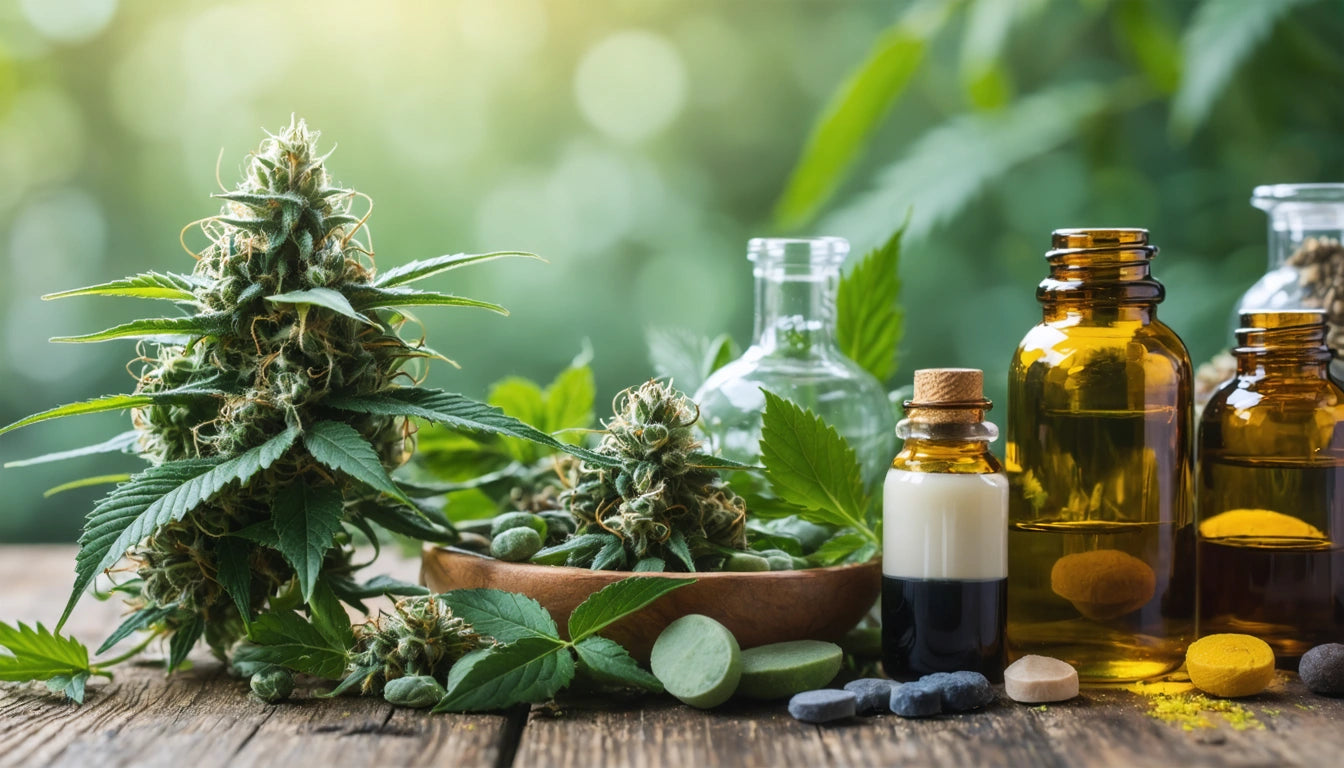Table of Contents
- Understanding Terpenes: Nature's Aromatic Compounds
- Common Cannabis Terpenes and Their Properties
- The Entourage Effect: How Terpenes Work With Cannabinoids
- How Terpenes Shape the Cannabis User Experience
- Terpene Testing and Reading Lab Reports
- Preserving Terpenes: From Cultivation to Consumption
- Terpenes and the Future of Cannabis Product Development
Terpenes are aromatic compounds naturally occurring in plants, including cannabis, that contribute to their distinctive scents and flavors. In cannabis, these compounds do much more than create pleasant aromas. They interact with cannabinoids to influence effects, potentially enhance therapeutic benefits, and help distinguish one strain from another. Understanding terpenes has become essential for consumers, producers, and retailers in the evolving cannabis market.
Understanding Terpenes: Nature's Aromatic Compounds
Terpenes are organic hydrocarbons produced in the same glandular trichomes that create cannabinoids like THC and CBD. Plants originally developed terpenes as defensive mechanisms to repel predators and attract pollinators. In cannabis, over 150 different terpenes have been identified, each with unique aromas and potential effects.
These compounds are not unique to cannabis. They appear throughout the plant kingdom, which is why cannabis can smell like pine, citrus, flowers, or fuel. The specific terpene profile of a strain contributes significantly to its sensory characteristics and may influence its effects on users.
Common Cannabis Terpenes and Their Properties
While cannabis contains numerous terpenes, several appear more frequently and in higher concentrations. The most common terpenes found in popular strains include:
Myrcene
Often the most abundant terpene in cannabis, myrcene produces an earthy, musky aroma similar to cloves. It's believed to have sedative, relaxing properties and may contribute to the "couch-lock" effect associated with some strains.
Limonene
With a bright citrus scent, limonene potentially offers mood-elevating properties. It's commonly found in sativa-dominant strains and citrus fruits.
Pinene
As the name suggests, pinene smells like pine trees and may help with alertness and memory retention. It's also found in pine needles, rosemary, and basil.
Linalool
This floral-scented terpene, also abundant in lavender, may have calming, anxiety-reducing properties.
Caryophyllene
Unique among terpenes, beta-caryophyllene can interact with the body's endocannabinoid system directly. It has a spicy, peppery profile found in black pepper and cinnamon.
The Entourage Effect: How Terpenes Work With Cannabinoids
The entourage effect describes how cannabis compounds work together to produce effects different from those of isolated compounds. Terpenes contribute significantly to this synergistic process by potentially modifying how cannabinoids interact with the body's endocannabinoid system.
For example, myrcene may help cannabinoids cross the blood-brain barrier more efficiently, while limonene might enhance the mood-elevating properties of certain cannabinoids. This synergy explains why whole-plant cannabis products often produce different effects than isolated THC or CBD.
How Terpenes Shape the Cannabis User Experience
Beyond their potential therapeutic properties, terpenes significantly impact the subjective experience of cannabis consumption. Their effects on mood, energy, and sleep help explain why strains with similar THC levels can produce markedly different experiences.
Consumers increasingly select products based on terpene profiles rather than just THC content. For example, those seeking relaxation might choose products high in myrcene and linalool, while those wanting focus might select pinene-rich options.
This growing awareness has influenced product development across the industry. When designing custom pre-roll cones for our clients, we've noticed increasing requests for packaging that preserves and highlights terpene profiles, recognizing their importance to the end-user experience.
Terpene Testing and Reading Lab Reports
As terpenes gain recognition for their importance, testing has become standard in many markets. Terpene testing in legal cannabis markets typically uses gas chromatography to identify and quantify specific compounds.
Understanding how to read terpene lab reports allows consumers and businesses to make more informed decisions. These reports typically list percentages of individual terpenes, helping predict effects and match products to preferences.
Preserving Terpenes: From Cultivation to Consumption
Terpenes are volatile compounds that can easily degrade with improper handling. Different extraction methods affect terpene retention significantly, with some techniques preserving profiles better than others.
To maintain terpene integrity:
- Store cannabis products in cool, dark places
- Use airtight containers that block UV light
- Avoid excessive heat during consumption
- Consider humidity control for flower products
- Choose packaging specifically designed to preserve terpenes
The growing interest in terpene preservation has led to innovations in cannabis packaging, with materials and designs specifically engineered to maintain these delicate compounds.
Terpenes and the Future of Cannabis Product Development
As cannabis science advances, terpenes are playing an increasingly central role in product development. Strain matching based on terpene profiles allows producers to create consistent experiences despite natural variations in cannabis plants.
The industry is also exploring synthetic versus botanical terpenes, weighing factors like consistency, cost, and authenticity. While synthetic options offer precision and scalability, many consumers prefer naturally derived terpenes for their complex profiles.
Culinary applications represent another frontier, with cooking with terpenes for flavor pairing emerging as a sophisticated niche in cannabis cuisine.
As research continues, we'll likely discover even more about how these aromatic compounds contribute to cannabis effects and potential therapeutic applications. For businesses and consumers alike, understanding terpenes has become essential to navigating the increasingly sophisticated cannabis marketplace.











Leave a comment
All comments are moderated before being published.
This site is protected by hCaptcha and the hCaptcha Privacy Policy and Terms of Service apply.